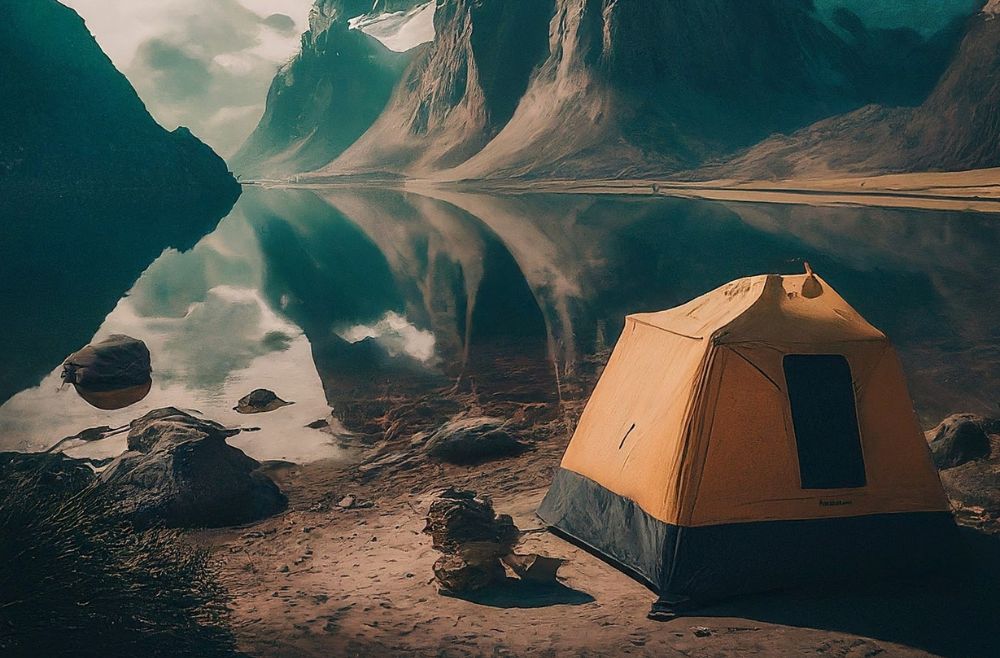Are you tired of settling for expensive and generic backpacking gear that doesn’t quite meet your needs? Looking to elevate your outdoor experience to new heights? Well, my friend, I have some fantastic news for you.
Prepare to embark on a journey of creativity and ingenuity as we explore the world of DIY gear for backpacking. In this article, I will share with you the secrets to revolutionizing your backpacking adventures with homemade equipment that is tailored to your specific requirements.
Get ready to discover the joy of crafting your own gear, while saving money and enhancing your overall experience. So, without further ado, let’s dive into the wonderful world of DIY backpacking gear and unlock a whole new level of outdoor exploration.
In This Article
Key Takeaways
- Wag bags are a necessary and increasingly common method for carrying out human waste in the backcountry, and can be easily made at home using trash bags, Ziploc bags, and kitty litter.
- A sturdy and puncture-proof container, such as a clear plastic container or a dedicated ‘poop tube’, is essential for carrying and storing wag bags.
- Toothpaste tabs are a lightweight and convenient alternative to traditional toothpaste for backpacking, and can be easily made at home by drying drops of toothpaste on parchment paper.
- DIY gear for backpacking offers a cost-effective and customizable option, with tutorials available for various projects that can be tailored to personal preferences and needs.
Wag Bags and Waste Management
Using wag bags for waste management is becoming increasingly common among backpackers, with more parks now requiring their use. Wag bags are biodegradable waste bags that are used to carry out human waste from the backcountry. They’re an essential tool for practicing Leave No Trace principles and minimizing environmental impact.
Composting toilets, which use natural decomposition processes to break down waste, are often used in conjunction with wag bags. When using a wag bag, it’s important to fold it small and seal it tightly after use to prevent any leaks or odors. These bags can be made at home using trash bags, Ziploc bags, and kitty litter. One tablespoon of kitty litter is recommended for each wag bag to help control odor and absorb moisture.
Properly managing waste with wag bags is crucial for maintaining the cleanliness and preservation of our natural spaces.
Containers for Waste Management
A container is necessary to safely transport and store wag bags for waste management while backpacking in the backcountry. When it comes to DIY waste disposal, there are eco-friendly alternatives that can be easily made at home.
One option is a dedicated ‘poop tube,’ which is a clear container that prevents punctures and allows for easy identification.
Another option is a clear plastic bag covered in duct tape, providing a seal and visibility.
Both options effectively contain the waste and prevent any leakage or odor.
These DIY containers are lightweight and convenient, offering backpackers a sustainable solution for waste management while enjoying the freedom of the great outdoors.
Toothpaste Tabs for Backpacking
Toothpaste tabs offer a convenient and lightweight alternative to traditional toothpaste for backpacking. They’re a game-changer for outdoor enthusiasts looking to lighten their load and simplify their dental hygiene routine.
Here are three reasons why toothpaste tabs are worth considering for your next backpacking trip:
- Portability: Toothpaste tabs come in compact, travel-friendly packaging that takes up minimal space in your backpack. Say goodbye to bulky toothpaste tubes weighing you down.
- DIY Options: If you’re feeling adventurous, you can even make your own toothpaste tabs at home using simple ingredients like baking soda and essential oils. This allows you to customize the flavor and ingredients to suit your preferences.
- Environmental Benefits: Many toothpaste tabs are made with natural and eco-friendly ingredients, reducing your impact on the environment. Plus, the packaging is often recyclable or biodegradable, making them a more sustainable choice.
With toothpaste tabs, you can maintain your oral hygiene while enjoying the freedom of backpacking without the hassle of traditional toothpaste.
Using Toothpaste Tabs
To make the most of your toothpaste tabs while backpacking, it’s essential to properly store and use them for maximum effectiveness.
Toothpaste tabs are a convenient and lightweight alternative to traditional toothpaste. They’re dehydrated drops of toothpaste that can be easily stored in a small container for backpacking.
After baking the tabs on parchment paper at the lowest temperature, they should be allowed to cool and firm up. Sprinkling baking soda on the tabs will help prevent them from sticking together.
To use the toothpaste tabs, simply place one in your mouth and brush with water.
The benefits of using toothpaste tabs include their compact size, ease of use, and the reduction of waste from traditional toothpaste tubes.
Homemade Backpacking Gear Ideas
When it comes to backpacking, I’m always on the lookout for homemade gear ideas that can save me money and add a personal touch to my outdoor adventures. Here are some DIY gear benefits and gear customization options that I’ve found:
- Explore other DIY gear options for backpacking: There are endless possibilities for making your own gear, from shelters to cookware, that can be tailored to your specific needs.
- Research and follow tutorials for specific gear projects: Many backpacking enthusiasts share their DIY projects online, providing step-by-step instructions and helpful tips.
- Customize the gear to fit personal preferences and needs: One of the biggest advantages of making your own gear is the ability to customize it to your liking, ensuring that it meets your individual requirements.
Research and Tutorials
I found that conducting thorough research and following tutorials has been instrumental in successfully creating my own homemade backpacking gear. By learning from the experiences and expertise of others, I have been able to avoid common mistakes and discover useful tips and tricks. The internet is a valuable resource for finding tutorials and guides on various DIY gear projects. Websites, forums, and YouTube channels dedicated to backpacking and outdoor adventures offer a wealth of information and step-by-step instructions. Additionally, I have found that joining online communities and forums allows me to connect with like-minded individuals who are eager to share their knowledge and experiences. By investing time in research and tutorials, I have gained the confidence and skills to create customized gear that perfectly suits my needs and preferences.
| Research and Tutorials | Tips and Tricks |
|---|---|
| Conduct thorough research on DIY gear projects | Take advantage of online tutorials and guides |
| Join online communities and forums for valuable insights | Connect with like-minded individuals for support and advice |
| Learn from the experiences and expertise of others | Avoid common mistakes and discover useful tips and tricks |
Level of Difficulty and Tools
Considering the level of difficulty and the tools required is crucial when embarking on DIY gear projects for backpacking. It’s important to assess your own skill level and determine if you have the necessary tools to complete the project successfully. Here are three key points to keep in mind:
- Start with simple projects: For beginners, it’s best to start with simple DIY gear projects that require basic sewing skills or can be easily assembled with common tools.
- Research and learn: Before diving into a project, take the time to research and learn about the techniques and tools required. There are plenty of online tutorials and resources available to help you get started.
- Build your tool collection: As you gain more experience with DIY gear projects, you may find it helpful to invest in a basic set of tools specifically for backpacking gear. This will make future projects easier and more efficient.
Personalization and Cost Savings
Now that we’ve discussed the level of difficulty and tools required for DIY gear projects, let’s explore the exciting possibilities for personalization and the cost savings that come with making your own backpacking gear.
When you make your own gear, you have a wide range of customization options available. You can choose the materials, colors, and features that best suit your needs and preferences. This level of personalization ensures that your gear is tailored to you and your specific backpacking adventures.
Not only does DIY gear allow for customization, but it also provides budget-friendly alternatives. By making your own gear, you can save money compared to buying expensive brand-name equipment. With a little creativity and resourcefulness, you can create high-quality gear that meets your needs without breaking the bank.
Conclusion
So there you have it, folks! With DIY gear, you can revolutionize your backpacking experience while saving money and unleashing your creativity.
Don’t settle for expensive store-bought options when you can craft your own personalized equipment. From wag bags to toothpaste tabs, there are endless possibilities for enhancing your outdoor adventures.
Embrace the power of DIY and take your backpacking to the next level. It’s time to gear up and hit the trails with confidence and resourcefulness.



We are participants in the Amazon Services LLC Associates Program, an affiliate advertising program designed to provide a means for sites to earn advertising fees by advertising and linking to Amazon.com